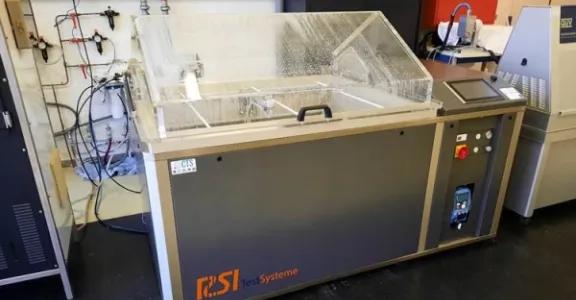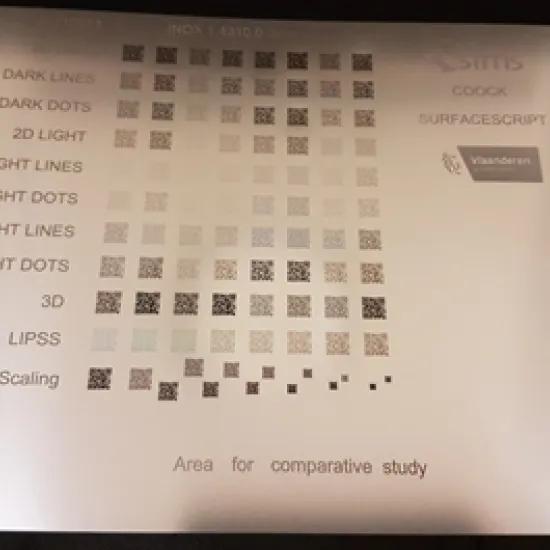Increasing the life span of materials with less impact from weather and environmental conditions is one of the key drivers in today's circular economy to reduce our environmental footprint. It is important to be able to quickly carry out simulations on products and components that show the impact of corrosion and oxidation on components and products.
In order to carry out such accelerated tests, Sirris has acquired a spacious salt spray cabinet (corrosion cabinet). Parts and materials can be placed in a warm (35-60 °C) salt spray (NaCl solutions) for a certain time. The salt acts on the surfaces and thus accelerates the detection of corrosion or oxidation. Also the influence of scratches, damages... on coatings, varnishes, protective layers, etc. can be compared in this way. This makes it possible to evaluate and improve new materials or protective coatings in a short time, without having to expose pieces to certain outdoor conditions for a longer period of time.
Test procedure
The entire spraying period can be programmed in different steps and at different temperatures and humidity levels. Programmed cycles can be repeated several times. The environment in which the components are used is taken into account. For example, a component at sea will react differently from a component inland. Each environment can be divided into a class, from low-corrosion environment to extreme corrosion environment. After certain predefined time periods and at the end of the test, the samples are evaluated for their corrosion behaviour. The colour and shape of oxidation can also be used to evaluate the coatings and their substrates. By making a cross-cut, the salt spray immediately reaches the base material and the interference layer. The evaluation is usually done in relation to a reference sample. Visible defects, such as blistering, crumbling or discolouration, indicate reduced corrosive resistance.The most common types of corrosion are:
- Uniform corrosion: the uniform corrosion of surfaces that have not been coated with a protective layer.
- Pitting corrosion: this occurs in metals that form an oxide layer. Particles penetrate the layer.
- Crevice corrosion: corrosive liquid remains in crevices.
- Intergranular corrosion: this occurs along grain boundaries of alloys.





